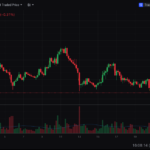The counter-trend strategy is a trading approach that involves taking positions against the prevailing market trend, aiming to capitalize on temporary reversals or corrections. While it may seem counterintuitive, this strategy is popular among experienced traders who seek opportunities in overbought or oversold markets.
What is Counter Trend Trading?
Unlike trend-following strategies that align with market momentum, counter-trend trading identifies points where an asset’s price has moved too far in one direction and is likely to reverse. Traders using this strategy rely on technical indicators and patterns to pinpoint these moments.
Core Principles of Counter Trend Trading
- Identify Overbought or Oversold Conditions:
- Counter-trend traders look for signs that an asset is overextended. Indicators like the Relative Strength Index (RSI) and Stochastic Oscillator are commonly used to detect overbought (above 70 RSI) or oversold (below 30 RSI) conditions.
- Look for Divergences:
- Divergences occur when the price moves in one direction while an indicator moves in the opposite direction, signaling a potential reversal.
- Example: The price of an asset is rising, but the RSI is falling, indicating weakening momentum.
- Use Support and Resistance Levels:
- Counter-trend traders often rely on well-defined support and resistance zones to predict reversal points.
- A support level might signal a buying opportunity during a downtrend, while resistance could indicate a selling opportunity during an uptrend.
- Timeframe Matters:
- Counter-trend strategies are typically used in shorter timeframes, such as intraday or swing trading, as reversals are often temporary.
Steps to Execute a Counter Trend Strategy
- Analyze the Market:
- Determine if the market is trending or range-bound. Counter-trend strategies work best in markets without strong directional momentum.
- Confirm Reversal Signals:
- Combine multiple technical indicators for confirmation. For example, pair RSI with Bollinger Bands to identify extreme price levels.
- Set Entry Points:
- Enter a trade when the asset approaches an overbought or oversold level and shows signs of reversal, such as candlestick patterns like hammers or engulfing patterns.
- Manage Risk:
- Use tight stop-loss orders to limit potential losses, as trading against the trend can be risky.
- The recommended risk-reward ratio is at least 1:2 to ensure profitability over time.
- Exit on Confirmation:
- Close the trade once the reversal has played out or the asset approaches a significant support or resistance level.
Advantages of Counter Trend Trading
- Opportunities in Volatile Markets: Counter-trend strategies can be highly profitable during periods of market volatility.
- Short-Term Gains: Traders can capitalize on quick reversals for rapid returns.
- Reduced Over-Reliance on Trends: This strategy allows traders to profit even in consolidating or choppy markets.
Challenges of Counter Trend Trading
- Higher Risk:
- Trading against the trend increases the likelihood of being caught in a prolonged move against your position.
- Frequent False Signals:
- Overbought or oversold conditions don’t always result in reversals, leading to potential losses.
- Requires Precision:
- Counter-trend trading demands sharp technical analysis skills and quick decision-making.
Tips for Successful Counter Trend Trading
- Focus on Liquid Markets: High liquidity ensures smoother price movements and better execution.
- Combine Strategies: Use counter-trend trading alongside trend-following strategies for diversification.
- Stay Disciplined: Stick to your plan and avoid chasing trades that don’t meet your criteria.
Is Counter Trend Trading Right for You?
Counter-trend trading can be rewarding for traders who excel at technical analysis and are comfortable with short-term, high-risk trades. While it requires precision and discipline, the strategy offers unique opportunities to profit from reversals and corrections that trend-followers often miss.
Conclusion: The counter-trend strategy is not for the faint-hearted but can be a powerful tool in a trader’s arsenal when executed correctly. By understanding market dynamics and using reliable indicators, traders can identify profitable opportunities and turn market corrections into gains.







